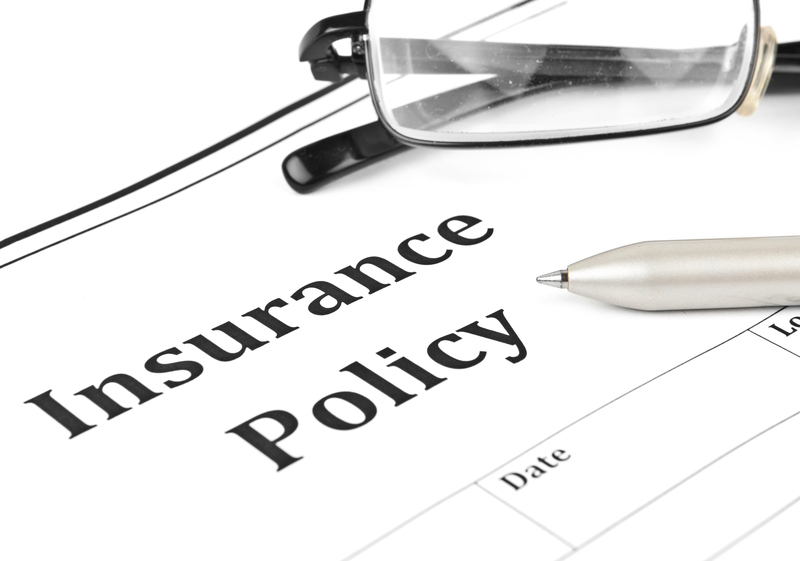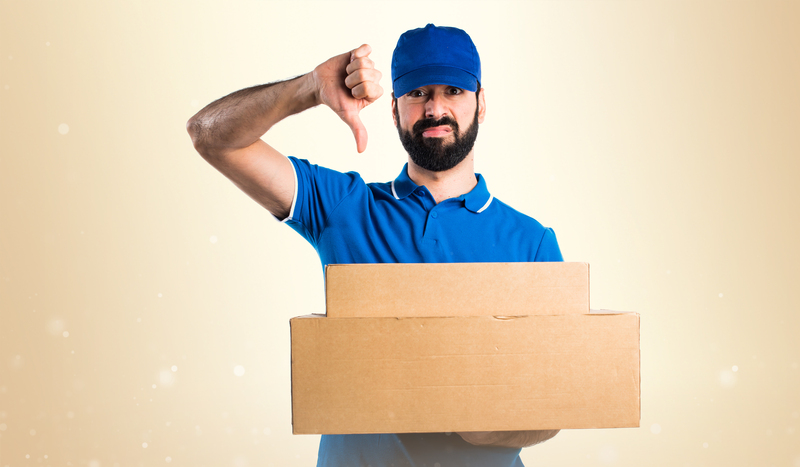The Risks of Moving a Piano Without Professional Help
Posted on 06/06/2025
The Risks of Moving a Piano Without Professional Help
Moving a piano is no ordinary task – it’s a complex endeavor that carries substantial risks if attempted without professional help. While the prospect of saving money or enlisting a few friends may seem tempting, countless homeowners underestimate the specialized skills, equipment, and careful planning required for safe piano relocation. In this in-depth guide, we’ll examine the hidden dangers and potential consequences of undertaking a piano move on your own, and why hiring expert piano movers is essential for your instrument’s safety, your home’s integrity, and your personal well-being.

Understanding the Challenges of Piano Moving
Pianos are unique among household items: they combine delicate internal mechanisms with immense weight and bulk. The combination of size, irregular shape, and fragile parts presents significant challenges.
- Upright pianos often weigh between 300-500 pounds
- Grand pianos can weigh from 500-1,200 pounds
- Pianos contain thousands of sensitive parts, including strings, hammers, pedals, and a finely calibrated action
- Wood casings and finishes are vulnerable to scratches, dents, and cracks
Moving such an instrument isn’t simply about strength—it requires technical expertise, special equipment, and a coordinated team.
The Most Common Risks of DIY Piano Moving
1. Physical Injury to Movers
- Strains, sprains, and muscle injuries: The awkward, heavy load can easily cause serious back injuries, strained muscles, and even long-term damage, especially when tackling stairs or uneven surfaces.
- Crushed fingers and toes: One slip can easily result in fingers or toes being caught beneath the piano.
- Slips, trips, and falls: Unfamiliarity with proper lifting techniques or missteps on slick or cluttered floors can result in severe falls.
2. Damage to the Piano Itself
- Cracked soundboard: Lifting the piano incorrectly can put flexural stress on the soundboard, leading to costly cracks.
- Broken legs and pedals: Legs, pedals, and other external parts are vulnerable to breakage if not properly braced.
- Scratches, dents, or gouges: Tight corners and doorways can cause irreparable damage to the piano’s finish and veneer.
- Internal misalignment: Jarring movements may dislodge or damage internal mechanisms, resulting in poor playability or even permanent harm.
3. Home or Property Damage
- Scuffed floors and carpets: An unprotected or sliding piano can leave gouges, tears, and deep scratches in floors and carpeting.
- Damaged walls and doors: The sheer size and weight of a piano can easily lead to dented walls, torn door jambs, and destroyed trim.
- Broken stairs or railings: Stairs not built to handle such weight may crack, and handrails may be ripped from mounts.
4. Unexpected Costs and Hidden Expenses
- Repair bills: Damage to your instrument or your home may end up costing far more than hiring piano movers in the first place.
- Lost time: DIY moves often require much longer planning, prep, and execution.
- Medical expenses: Personal injury from a failed piano move can lead to hospital visits, physical therapy, or long-term health issues.
Special Risks: Stairs, Tight Spaces, and Irregular Terrain
Professional piano moving services are trained to handle architectural challenges that often make DIY attempts risky or doomed to failure.
Staircases
- Maneuvering a heavy piano up or down even a short flight of stairs is one of the most dangerous scenarios for amateurs.
- Pianos can easily tip, slide, or gain momentum on stairs, placing everyone involved at risk of serious injury.
- Banisters, walls, and floor edges are frequently damaged when angles are misjudged.
Tight Doorways and Hallways
- Pianos often barely fit through standard doors; incorrect angles can result in scraped finishes, broken corners, or stuck instruments.
- Professional movers use tools like piano boards, ramps, and special dollies that minimize risk.
Irregular or Outdoor Terrain
- Moving across gravel, grass, mud, or uneven pavement (such as from house to moving truck) increases the likelihood of tipping and dropping the instrument.
- Sudden shifts in load or loss of balance can destroy both piano and property.
Insurance and Liability: The Overlooked Aspect
One crucial reason to rely on licensed piano movers is insurance. Professional movers carry liability insurance that covers damage to your home, your piano, and themselves in case of an accident. When you attempt to move a piano yourself:
- There is usually no coverage for personal injury or property damage
- Any damage to the piano is your sole responsibility, and insurance may not reimburse improperly moved instruments
- If friends or volunteers are injured, you could face legal consequences
The Hidden Complexity of Piano Construction
Pianos are engineered for resonance, balance, and subtlety—every component plays a role in how they sound and perform. Their construction means that amateur moving attempts frequently result in unseen damage:
- Strings and hammers can be jarred out of alignment
- Pins and action mechanisms are easily disrupted
- Changes in humidity and temperature, such as those experienced during a long move, can cause serious harm if not accounted for
What Professional Piano Movers Offer
Professional piano moving companies are highly trained and bring specialized resources to guarantee the safety of both your instrument and your home. Their process typically includes:
- Assessment: Evaluating the piano's size, weight, and route out of your home
- Disassembly (if needed): Carefully removing legs, pedals, and lyres for safe transit
- Padding and wrapping: Using protective blankets, boards, and straps to avoid scratches, chips, and impacts
- Specialized equipment: Employing piano dollies, skids, hump straps, and ramp systems designed for heavy instruments
- Team coordination: Using a well-practiced crew to lift, balance, and communicate through every step of the move
- Reassembly and setup: Ensuring the piano is placed and leveled correctly in its new location
Case Studies: Real-World Consequences of DIY Piano Moves
Case 1: Upright Piano on the Stairs
A family in Chicago attempted to move their old upright piano down a flight of stairs. Without a piano board and using a borrowed hand truck, they lost control halfway down. The piano careened into the wall, damaging two stairs, several spindles on the banister, and crushing a toe. The instrument was declared a total loss, and repair costs exceeded the price of hiring movers.
Case 2: Grand Piano – Tight Corner Disaster
A group of friends decided to move a baby grand through an apartment's narrow hallway. Lack of experience led to the piano becoming wedged in a doorway, chipping the finish and bending the pedal assembly. When force was applied, the instrument’s leg cracked, necessitating costly repairs and tuning.
Case 3: Uninsured Friend, Unforeseen Lawsuit
An enthusiastic friend volunteered to help move a piano. While navigating a curb, he tripped and broke an ankle. Lacking insurance and unable to work for several months, he sued for lost wages and medical expenses--creating lasting strain on the friendship, as well as unforeseen expenses.

Expert Recommendations: Why Safety and Expertise Matter
The risks of moving a piano without professional help are not simply physical—they’re financial, emotional, and long-term. Skilled piano movers:
- Have the equipment, experience, and insurance to safely transport any size of piano
- Know how to protect delicate internal parts from jarring and impact
- Can quickly navigate tight spaces, stairs, and variable terrain without incident
- Take responsibility for any damages
- Provide insight and setup on the ideal placement and leveling of your instrument in its new location
Piano manufacturers, tuners, and technicians universally recommend professional moving services for any piano transition. Many warranties specifically exclude coverage for damage incurred from amateur moves.
Final Thoughts: Is It Worth the Risk?
While it may be tempting to save on costs and move your beloved instrument yourself, the price of DIY failure can be exorbitant. If your piano is valuable to you--whether financially or emotionally--the value of professional relocation cannot be understated.
- Avoid injury, damage, and regret by entrusting your piano to the experts
- Protect your home, your health, and your peace of mind
- Ensure a safe journey and the continued resonance of your cherished instrument for generations to come
In conclusion, moving a piano without professional help is a risk not worth taking. For optimal protection and peace of mind, always rely on qualified piano movers--their skills, tools, and experience ensure your investment is preserved and your move goes smoothly. Don’t gamble with the safety or sound of your instrument. Choose professionalism, and let your piano sing sweetly in its new home.









